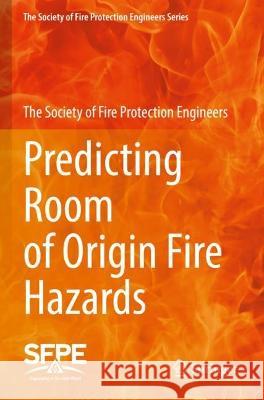Predicting Room of Origin Fire Hazards » książka
topmenu
Predicting Room of Origin Fire Hazards
ISBN-13: 9783031086212 / Angielski / Miękka / 2023
Predicting Room of Origin Fire Hazards
ISBN-13: 9783031086212 / Angielski / Miękka / 2023
cena 363,12
(netto: 345,83 VAT: 5%)
Najniższa cena z 30 dni: 346,96
(netto: 345,83 VAT: 5%)
Najniższa cena z 30 dni: 346,96
Termin realizacji zamówienia:
ok. 22 dni roboczych
Dostawa w 2026 r.
ok. 22 dni roboczych
Dostawa w 2026 r.
Darmowa dostawa!
This engineering guide provides a methodology to define and quantify the fire development and
ensuing conditions within the room of fire origin from the fire’s incipient stage through its full
development. The approach presented in this guide was developed using the framework set forth
in the SFPE Engineering Guide to Performance-Based Fire Protection. 2nd ed., Quincy, Mass.:
National Fire Protection Association, 2007.)
It consists of three distinct parts:
1. Approach selection
2. Input definition and data collection
3. Results computation
Specifically, this guide was developed for use as a means to implement the requirements presented in Chapter 10 of the SFPE Engineering Guide to Performance-Based Fire Protection. However, material within this guide has broader applicability and is therefore not limited to performance-based design applications.











